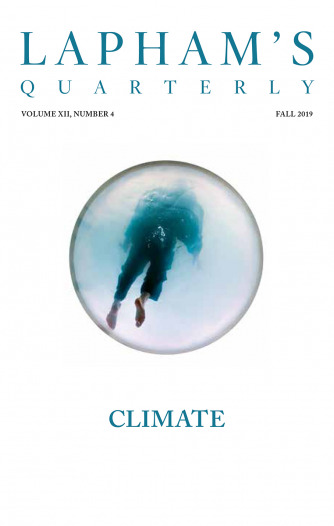September 24
How is it that birds find their way back to their old home? This seems to me the most inexplicable part of the whole matter. I cannot even offer an approach to its solution.
There was a time when I had hopes that what is called the “homing” faculty in pigeons might furnish a clue, but my good friend Mr. Tegetmeier has cruelly deprived me of that consolation, declaring that knowledge of landmarks obtained by sight, and sight only, is the sense which directs these birds, with which he is so conversant; while sight alone can hardly be regarded as much of an aid to birds—and there is some reason to think that there are several such—which at one stretch transport themselves across the breadth of Europe. Here I have no theory to advance, no prejudice to sustain. I should be thankful indeed for any hypothesis that would be in accordance with the observed facts. They leave no room for chance and not much for counteracting forces. Occasionally, the return of the nightingale, the swallow, or other land birds may be somewhat delayed, but most sea fowl can be trusted as the almanac itself. Were they satellites revolving around this earth, their arrival could not be more surely calculated by an astronomer. Foul weather or fair, heat or cold, the puffins repair to some of their stations as regularly on a given day as if their movements were timed by clockwork. Whether they have come from far or from near we know not, but other birds certainly come from a great distance, and yet they make their appearance with scarcely less exactness. Nor is the regularity with which certain species disappear much inferior; every observer knows how abundant the swift is up to the time of its leaving its summer home, and how rarely it is seen after that time is past. Yet all this, marvelous as it may seem, is far less marvelous than the instinct, or whatever else we may call it, which guides the birds in their voyages and gives them the power of directing their flight year after year to the same spot. The solution is probably simple in the extreme—possibly before our eyes at this moment if we could but see it—but whosoever discovers it will assuredly deserve to have his name remembered among those of the greatest discoverers of this or any age.
October 8
The subject to which Professor Newton has called attention is one of great interest to all naturalists and requires to be studied systematically; for I can hardly think that the solution is so “simple in the extreme” as Mr. Newton thinks it may be.
It appears to me probable that here, as in so many other cases, “survival of the fittest” will be found to have had a powerful influence. Let us suppose that in any species of migratory bird, breeding can as a rule be only safely accomplished in a given area; and further, that during a great part of the rest of the year, sufficient food cannot be obtained in that area. It will follow that those birds which do not leave the breeding area at the proper season will suffer and ultimately become extinct; which will also be the fate of those which do not leave the feeding area at the proper time. Now, if we suppose that the two areas were (for some remote ancestor of the existing species) coincident but, by geographic and climatic changes, gradually diverged from each other, we can easily understand how the habit of incipient and partial migration at the proper seasons would at last become hereditary, and so fixed as to be what we term an instinct. It will probably be found that every gradation still exists in various parts of the world, from a complete coincidence to a complete separation of the breeding and the subsistence areas; and when the natural history of a sufficient number of species in all parts of the world is thoroughly worked out, we may find every link between species which never leave a restricted area in which they breed and live the whole year round to those other cases in which the two areas are absolutely separated. The actual causes that determine the exact time, year by year, at which certain species migrate, will, of course, be difficult to ascertain. I would suggest, however, that they will be found to depend on those climatal changes which most affect the particular species. The change of color, or the fall, of certain leaves; the change to the pupa state of certain insects; prevalent winds or rains; or even the decreased temperature of the earth and water, may all have their influence. Ample materials must exist, in the case of European birds, for an instructive work on this subject. The two areas should be carefully determined for a number of migratory birds; the times of their movements should be compared with a variety of natural phenomena likely to influence them; the past changes of surface, of climate, and of vegetation should be taken account of; and there seems no reason to doubt that such a mode of research would throw much light on, if it did not completely solve, the problem.
From the journal Nature. A founding member of the British Ornithologists’ Union, Newton in the mid-1850s began a decade-long journey throughout Europe and North America looking for information on the extinct great auk. Around the same time, Wallace, a British naturalist best known for helping Charles Darwin develop the theory of natural selection, made his own voyage through the Amazon and the Malay Archipelago, collecting over 125,000 animal specimens. This article by Newton, and Wallace’s reply, appeared in the British journal Nature, founded five years earlier.
Back to Issue


